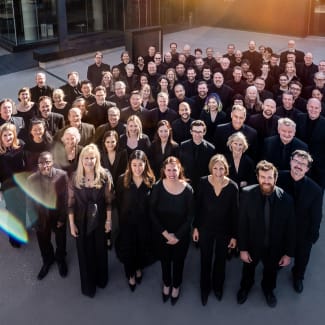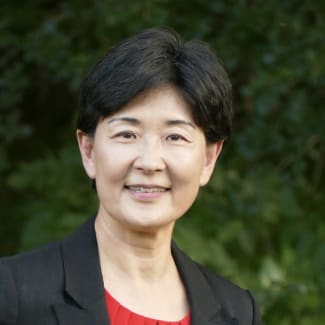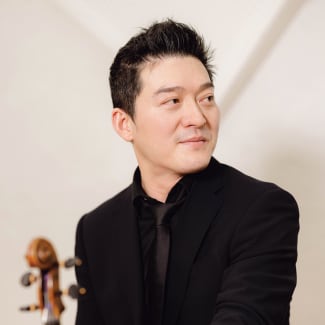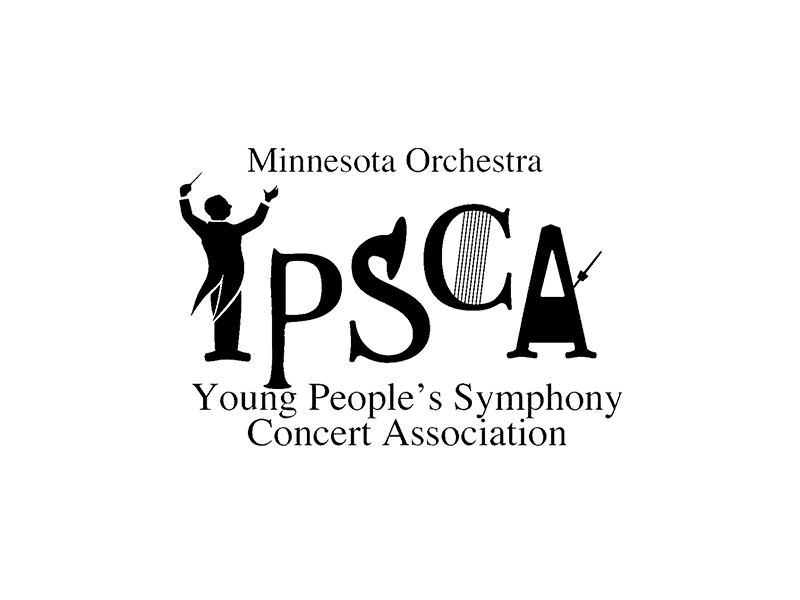
Digital Young People's Concert Experience
Lunar New Year
Lunar New Year is a two-week-long festival that encourages family and friends to gather together. Join the Minnesota Orchestra in this one-hour performance for grades 1-6, and learn more about some of the cultures that celebrate this holiday.
About the Composers
Spring Festival Overture
Spring Festival Overture is the most famous composition of Chinese composer Li Huanzhi (1919-2000)—music so beloved that it was among a small number of musical works launched into space in 2007 on China’s first lunar probe, Chang’e 1.
The overture is the first and best-known movement of Li’s four-part Spring Festival Suite, composed in 1955 and 1956. It depicts a scene in the Shanbei region of revelers celebrating the Lunar New Year, also known as the Spring Festival, and the music’s themes come from that region’s folk music. In the overture we hear sounds reminiscent of fireworks and parades, along with a gentler inner passage that is built on a traditional melody conveying greetings for the New Year as well as prayers for peace and good fortune.
Arirang Fantasy
The Korean folk song Arirang, an expression of nostalgia in the face of separation, is popular throughout the divided peninsula, serving as an unofficial national anthem. It is heard at this concert in a version written in the 1970s by North Korean composer Choi Sunghwan that was notably performed by the New York Philharmonic on its 2008 tour to North Korea and South Korea. Featuring lush Romantic harmonies and key solo moments for harp and flute, Arirang Fantasy opens with the lyrical Arirang melody, which is varied freely in the opening section, gradually increasing in speed. After a plaintive digression into minor harmonies, the music returns to a happier major key, grows faster and triumphant, then dials back to a slow, calm close.
Arirang is a song of great flexibility: its lyrics and melody have been modified over the years to such an extent that musicologists have identified about 60 principal versions and at least 3,600 variants. Its malleability has led to a variety of uses in the North and South, from protest to solidarity to sporting events. At the Opening Ceremonies of the 2018 Winter Olympics in Pyeongchang, South Korea, athletes from South Korea and North Korea marched together in unity as the song’s most common version, Jeongseon Arirang, was played.
Excerpt from The Butterfly Lovers Violin Concerto
The Butterfly Lovers Violin Concerto is credited jointly to two composers—Chen Gang (b. 1935) and He Zhanhao (b. 1933), who collaborated on its composition in 1959 while they were students at the Shanghai Conservatory of Music. Cast in one long movement and subdivided into seven sections, the concerto is a musical representation of the Chinese legend of the Butterfly Lovers, with the solo violin representing the protagonist Zhu Yingtai, and the cello part symbolic of her lover Liang Shanbo. Chen was responsible for the majority of the concerto’s scoring, while He’s primary contribution was the work’s famous opening theme.
The concerto is scored for a standard-sized Western orchestra, and utilizes a variety of traditional Chinese techniques and styles to create a sound world suitable for its story. Among them are the use of a five-pitch pentatonic scale and a number of melodies from Chinese folk songs and from a well-known Chinese opera version of the Butterfly Lovers story. Across the concerto we follow Zhu and Liang as they meet in childhood, attend school and grow closer. The tale turns tragic as Zhu is betrothed to another man, Liang becomes ill and dies, and Zhu throws herself into Liang’s grave. In closing, the lovers’ spirits emerge as butterflies.
The Butterfly Lovers, which premiered in 1959, is often used in figure skating routines, memorably for Chen Lu’s free skate performance at the 1998 Winter Olympics in Nagano, Japan, at which she became the first Chinese athlete to win a medal in figure skating.
In the Dark Night for Jing Hu and Orchestra
For In the Dark Night by Chinese composer Wu Hua (1943-2020), the Minnesota Orchestra welcomes jing hu master Mr. Zhengang Xie and yue qin master Ms. Mei Hu, a husband-and-wife team who are the parents of the Orchestra’s Principal Bassoon Fei Xie. Wu’s composition, heard here in an orchestration by Ma Jun and Han Guang, has its origins in a famous melody from the Peking Opera and showcases the jing hu—a bowed instrument with two strings—as well as the yue qin, a four-stringed lute with a distinctive round, hollow wooden body.
In the Dark Night comes from a suite by Wu describing the ill-fated story of Xiang Yu, a rebel leader during the fall of the Qin Dynasty (221-206 B.C.), and his concubine Yuji. The music begins with a low-pitched flute solo and continues with a Chinese drum passage, over which the orchestra crescendos and stops, leading to the entrance of the jing hu and yue qin. Those two featured instruments play continuously in free-flowing melodies for the rest of the piece, through varying textures, tempos and meters until the final measures, marked fff with trills and tremolos abounding.
Sketches of Singapore
Contemporary Singaporean composer Kelly Tang (b. 1961), who writes in genres ranging from classical and jazz to symphonic and popular music, composed the colorful Sketches of Singapore in 2008 on a commission from the Singapore Symphony Orchestra. The score bears the following note:
“Sketches of Singapore utilizes the broad musical palette of the symphony orchestra to unlock expressive possibilities lying latent within four popular Singaporean melodies. The simple elegance of these tunes provides the ideal foundation upon which to weave elaborate textural layers, lively rhythmic elaborations, colorful tonal shading and flavorful harmonic tapestries. The development and transformation of fragments derived from these tunes generate fresh dramatic dimensions that unfold upon a symphonic canvas…The work begins with the triumphant energy of Stand Up for Singapore. Next, the folk tune Rasa Sayang is presented in the comic style of a scherzo. Cast in a passionate yet elegant orchestral glow, the deep Romantic essence of the third tune, Where I Belong, is fully unveiled. In the grand finale, the venerable Di Tanjong Katong is symphonically expanded to radiate all its innate glory.”
Circle of Unity
This month the Minnesota Orchestra performed the world premiere of Finnish composer Jaakko Kuusisto’s arrangement of Circle of Unity by Vietnamese composer, performer and artist Trinh Cong Son (1939-2001). Kuusisto’s arrangement, based on the version by Vietnamese musician Hô Quang Hiêu, is energetic and fast-paced, with effects including muted brass, strings sliding from one pitch to the next, shouting from the musicians, and a percussion part that imitates the sound of a high-frequency EDM-style snare.
Son, one of the great figures in 20th-century Vietnamese music and art, wrote more than 500 songs and poems, many relating to love and the hope for a peaceful Vietnam. Circle of Unity dates from 1968, in the midst of the Vietnam War, with lyrics outlining the dream of reconciliation between North and South Vietnam. In 1975, as the war was coming to an end, Son accepted an invitation to perform Circle of Unity on a radio broadcast from Saigon, urging all Vietnamese people to join hands and unite.
Program notes by Carl Schroeder.
Guide to the Orchestra
See instruments in action, as demonstrated by Minnesota Orchestra musicians.

Concert Guide
Explore the Lunar New Year concert guide, written by composer and musician Gao Hong and designed for use in the classroom. The guide includes musical activities, flashcards and more.
Artists

The Grammy Award-winning Minnesota Orchestra, now in its second century, ranks among America’s top symphonic ensembles, with a distinguished history of acclaimed performances in its home state and around the world; award-winning recordings, broadcasts and educational engagement programs; and a commitment to intentionally build concert programs to feature more works by composers of color, exploring music both contemporary and historic. This past fall, Danish conductor Thomas Søndergård began his tenure as music director.

Junping Qian, who is now in his third year of leading the Minnesota Orchestra’s Lunar New Year celebration, served as assistant conductor of the Royal Scottish National Orchestra from 2018 to 2020 and was a visiting faculty member at the Royal Conservatoire of Scotland.

Dr. Benhong Rosaline Tsai, now in her third year of hosting the Minnesota Orchestra’s Lunar New Year concerts, is a global talent management executive who has held transformative leadership roles in multiple Fortune 500 organizations such as Ecolab, Honeywell and Xcel Energy. She currently serves as Vice President of Talent, Learning, and Org Effectiveness at Thrivent, a Fortune 500 financial services firm based in Minneapolis.

Rui Du was appointed assistant concertmaster of the Minnesota Orchestra in 2015. He had previously been a member of the Baltimore Symphony Orchestra, where he won fourth chair in the first violin section in 2012 and soon after was named acting assistant concertmaster. Additionally, he served as concertmaster of the Annapolis Symphony Orchestra in 2009. Since 2015, Du has been a regular guest concertmaster of China’s Qingdao Symphony Orchestra under maestro Zhang Guo-Yong. He has also served as concertmaster of the Tanglewood Festival Orchestra, Hebei Symphony, Guiyang Symphony and North Dakota Symphony, and as associate concertmaster of the Aspen Music Festival Orchestra.

Jing hu master Mr. Zhengang Xie and yue qin master Ms. Mei Hu, a husband-and-wife team, are listed as members of the elite group among the musicians in the Directory of Current Chinese Artists of 1998, which Hu participated in editing. While in China, as the top “Cheng” style Peking Opera fiddlers, Xie and Hu performed and recorded as solo jing hu and yue qin players with many top Beijing Opera houses, including the Beijing Opera House and National Opera House.

Jing hu master Mr. Zhengang Xie and yue qin master Ms. Mei Hu, a husband-and-wife team, are listed as members of the elite group among the musicians in the Directory of Current Chinese Artists of 1998, which Hu participated in editing. While in China, as the top “Cheng” style Peking Opera fiddlers, Xie and Hu performed and recorded as solo jing hu and yue qin players with many top Beijing Opera houses, including the Beijing Opera House and National Opera House.
Sponsored By
Thomas* and Mary Lou Detwiler
Mary Ann Feldman Music Education Fund
CORPORATE & INSTITUTIONAL SPONSORS




